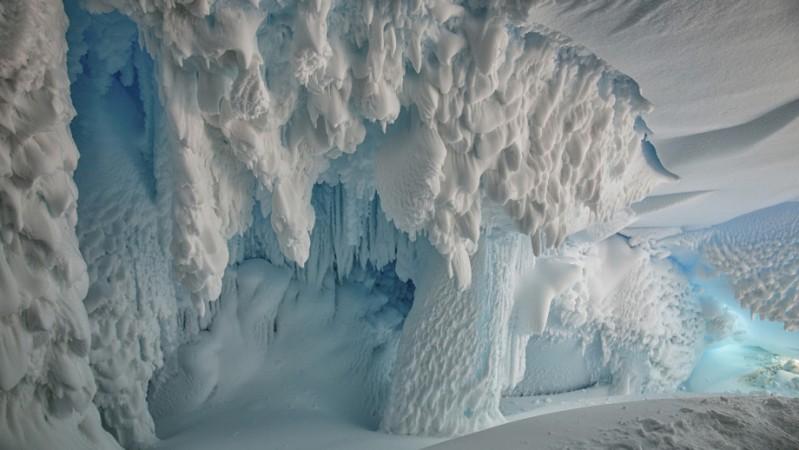
Hundreds of kilometres of mountain ranges and valleys have been found deep under the surface ice in Antarctica and it could contribute to the rising global sea levels.
Using ice-penetrating radar, a team of British researchers mapped the region's subglacial landscape, and they believe that these structures are key in understanding Antarctica's past, its formation and possibly, it's future as well, reports the Washington Post. Three valleys were identified in this study, notes the report, they connected the Western Antarctic Ice Sheet and the far bigger Eastern Antarctic Ice Sheet.
These newly discovered landforms below the ice play the role of preventing ice from East Antarctica from flowing through to West Antarctica and eventually out to the coast, influencing rising sea levels globally. Such features can only perform this function if the ice above is thick and heavy, notes the report. Thinning ice sheets, caused by warming, sitting on these valleys however can, "increase the speed and rate at which ice flows out from the center of Antarctica to its edges, leading to an increase in global sea levels," said Kate Winter, the study's lead author and a research fellow at Northumbria University.
"Understanding how the East and West Antarctica ice sheets interact is fundamental to our understanding of past, present and future global sea level," said Neil Ross, a senior lecturer at Newcastle University.
So far, the largest of the valleys- Foundation Trough is about 350 km long and is about 32 km wide. Another valley- the Patuxent Trough, is about 321 km long and over 14 km wide. The smallest one identified so far- the Offset Rift Basin, is nearly 150 km long and 29 km wide.
"These new PolarGAP (ESA project) data gives us both insights into how the landscape beneath the ice influences present ice flow, and a better understanding of how the parts of the great Antarctic ice sheets near the South Pole can, and cannot, evolve in response to glaciological change around their margins," Ferraccioli said.
The study was first published in the journal Geophysical Research Letters.

















